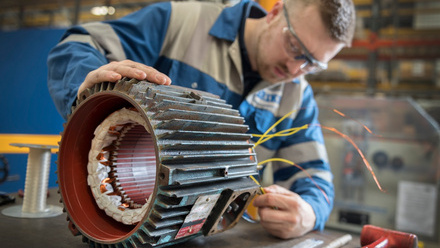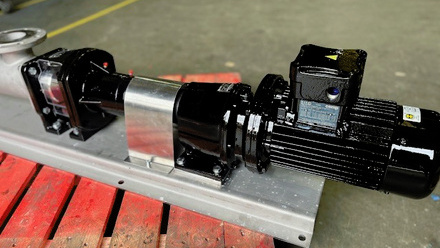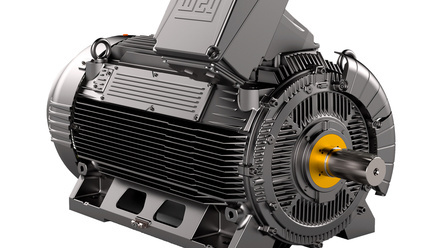IEC 60079-19: What is it and what does it mean to me?
Over the years we have all seen in the news the disastrous consequences of explosions in hazardous area installations. From Piper Alpha to Buncefield to Deepwater Horizon, the collateral damage and loss of life represent a cost that simply cannot be counted.
Certainly such disasters bring into sharp focus the requirement to specify compliant products for hazardous area installations, covered by international standard commissioners such as IEC Ex, and legislative frameworks such as the European ATEX directive. But what are the implications for the repair, overhaul and reclamation of equipment used in explosive atmospheres.
IEC 60079 is a series of explosive atmosphere standards that covers a wide array of considerations for component usage in hazardous areas, as well as defining different hazardous area classifications. An important section of the series specifically covers equipment repair, overhaul, reclamation and modification. This is distinct from the maintenance of equipment, other than when repair and overhaul cannot be separated from maintenance.
Ex rated equipment was first defined in the early 20th Century after a serious coal mining accident, with FLP (Ex d) or flameproof motors being the first examples of Ex rated components. In 1984, AEMT and BEAMA jointly produced a code of practice for the repair of Ex rated equipment, and in 1993 this was first adopted as a British standard and published as BS EN 60079 Part 19.
The standard was internationalised in 2004 and published as IEC 60079-19, with additional requirements during overhaul and repair of Ex equipment. Further, the updated standard removed the exclusion of mining and introduced all explosive atmospheres - including dusts. It also introduced new requirements for competency of persons, and when it comes to liability in the event of an explosion, those last requirements serve to define responsibility.
Those parties charged with buying-in overhaul and repair services, and signing them off, along with those companies who are offering the services, should also be aware that IEC 60079-19 was significantly updated. These occurred in 2011, with a subsequent amendment in 2015, with the inclusion of specific Group I requirements and the inclusion of offshore requirements.
General principles
IEC 60079-19 lays down the general principles of repair, overhaul, reclamation, alteration and modification that are common to all explosion-protected equipment, with additional clauses to provide instructions relevant to specific types of protection. Assuming that repairs and overhauls are carried out using good engineering practices and certificate details, then the finished equipment is considered as being conformant to the original standard and the manufacturer’s specification. Where this specification data is not available, then equipment can be described simply as having been repaired in conformance to IEC 60079-19 and meeting the relevant standards the equipment was designed to conform to. Of course, steps taken to obtain the original specification data should be documented.
All repair or overhaul work carried out must be fully documented, and job reports submitted to the user. Repair facility records should be maintained to provide a complete audit trail of the work carried out and all of the steps taken. Measurements such as flame path or radial gap should be recorded and conform to the relevant standards criteria. Equipment returned to the end user should be clearly labelled as having been repaired or overhauled, with the relevant manufacturing standards it meets, and the repairer identified.
Where reclamation is being carried out, this should be performed by competent personnel. Ultimate responsibility falls under the repair facility, even if reclamation work is out-sourced to a third party. It should be noted that not all procedures are applicable to all types of protection, and IEC 60079-19 gives detailed instructions on what can and cannot be reclaimed.
Where equipment is to be modified rather than repaired, then either alterations need to be specifically permitted in the certificate documentation, or, the proposed alteration needs to be authorised by the manufacturer, in writing, to be permitted by the certificate.
If a modification means that the equipment can no longer be confirmed as meeting the original certified specification, then the user needs to be notified in writing, with a report stating that the equipment cannot be used in an explosive atmosphere without additional assessment.
Temporary repairs to achieve continued short-term operation of equipment can only be carried out if it can be demonstrated that explosion-protection capabilities are maintained or if other appropriate explosion-protection measures are taken. Any temporary repair should be brought up to full repair standards as soon as possible.
Additional requirements
A key section of the standard details additional requirements for the repair and overhaul of equipment that is Ex d rated. The standard focuses on requirements for enclosures, cable and conduit entries, terminations, insulation, internal connections and windings (including repair of rotating machine rotors). Detailed instructions are also given on a number of testing processes for windings after any repair, which should be completed as far as is reasonably practicable.
There is also a host of additional requirements for the likes of flameproof brakes, other auxiliary devices, light-transmitting parts, encapsulated parts, batteries, lamps, lampholders, ballasts and breathing devices.
A further section within the standard goes on to detail additional requirements for the repair and overhaul of equipment rated as intrinsically safe (IS). This focuses on equipment such as enclosures, cable glands, terminations, soldered connections, fuses, relays, shunt diode safety barriers, PCBs, optocouplers, electrical components, batteries, internal wiring, transformers, encapsulated components, and non-electrical parts.
Not all of these parts are able to be repaired, and should simply be replaced. Where equipment is repaired or overhauled, the work should be followed by testing of the dielectric strength of the insulation between the intrinsically safe circuit and the metallic enclosure.
No attempt at reclamation should be made on components on which intrinsic safety depends. Any alteration of equipment needs to be considered as a modification to the complete system from that shown in the IS documentation. Any modification not approved by the manufacturer, and not listed in the certificate documentation, must be re-certified by a qualified third party.
A reassessment should be carried out by a qualified third party – specifically, then, not the company which made the modification.
Another clause within the standard details requirements for the repair and overhaul of pressurised equipment. While it is preferable to obtain new parts from the manufacturer, in principle damaged parts such as enclosures can be repaired or replaced. Detailed instructions are provided as to what can and cannot be done with the likes of enclosures, cable and conduit entries, terminations, insulation, internal connections and windings, along with instructions for testing after the repair.
While Ex d, pressurised and intrinsically safe equipment will probably represent the bulk of the most safety-critical repair and overhaul work in hazardous areas, the scope of IEC 60079-19 is more comprehensive, offering detailed instructions for the likes of equipment with protection type ‘e’ (increased safety), type ‘n’, Group III ‘t’ (Dust), and type ‘pd’ (pressurised).
Responsible persons
A very important section of IEC 60079-19 to be aware of is Annex B, which defines the knowledge, skills and competencies of ‘responsible persons’ and ‘operatives’. Responsible persons are those who are responsible for the processes involved in the overhaul, repair and reclamation of the types of explosion protected equipment as defined within the standard. These responsible persons should confine their involvement to overhaul, repair and reclamation, and should not be involved in modification without the manufacturer's guidance.
Any repair facility must appoint a ‘responsible person' with the required competencies within the management organisation, to accept responsibility and authority for ensuring that the overhauled/repaired equipment complies with the certification status and work carried out has been agreed with the user. That person must have a working knowledge of the appropriate explosion protection standards and an understanding of this standard. This requirement means that it is the responsible person who takes the final decision that Ex Equipment is in compliance and can be returned to the customer.
Operatives, as defined in the standard, who will be working on equipment and who may be taking decisions that would have an impact on the certification status of the Ex equipment, need to work under the surveillance of the responsible person. All operatives involved in the overhaul and repair processes need to be independently assessed as competent to IEC 60079-19 and they need to be aware of the requirements of the standards.
The service facility of course has a responsibility to demonstrate compliance with the requirements of IEC 60079-19, but importantly there is also an onus on the user to ascertain that the service facility can indeed demonstrate compliance. In the event of any problem with repaired, overhauled or modified equipment, investigation bodies will look for evidence of due diligence from both parties.
We can see then, that the requirements of IEC 60079-19 are extremely stringent, and measures that were once guidelines are now required to be able to conform with the mandatory ATEX directives and other legislation. However, in areas with potentially explosive atmospheres, the stakes are high and the potential for the next Buncefield or the next Piper Alpha is never far from our minds.





